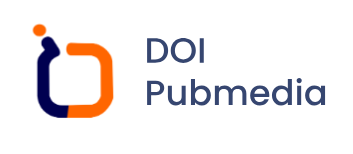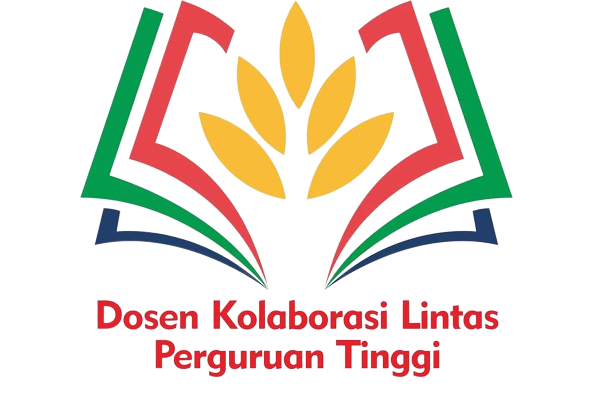Firm Performance and Financial Distress: The Moderation Role of Board Gender Diversity
DOI:
https://doi.org/10.69812/jgs.v1i1.41Keywords:
Financial Distress, Firm Performance, Board Gender DiversityAbstract
This study contributes to the understanding of financial distress by examining the role of gender diversity on corporate boards as a moderating variable in the relationship between company performance and financial distress. Focusing on the property and real estate sector, the research utilized a sample of 120 observations collected through purposive sampling techniques. The analysis was conducted using regression techniques to assess the impact of board gender diversity while controlling for company performance. Findings reveal that neither company performance nor board gender diversity alone has a significant relationship with financial distress. However, the study highlights the importance of board gender diversity as a moderating factor, suggesting that the composition of the board can influence the dynamics between a company's performance and its susceptibility to financial distress. The practical implications of this research are particularly relevant for companies in the property and real estate sector, as it underscores the need for balanced gender representation on boards. It suggests that shareholders should take care when selecting new board members, ensuring a well-rounded mix of male and female directors. This diversity is valuable because it brings together different perspectives, experiences, and expertise that can enhance decision-making processes, potentially leading to better management of financial risks and overall company performance. Ultimately, this study advocates for a more inclusive approach to corporate governance that recognizes the benefits of gender diversity in the boardroom.
Downloads
References
Agrawal, K., & Maheshwari, Y. (2019). Efficacy of industry factors for corporate default prediction. IIMB Management Review, 31(1), 71–77. https://doi.org/10.1016/j.iimb.2018.08.007
Altman, E. I. (1968). Financial Ratios, Discriminant Analysis And The Prediction Of Corporate Bankcrupty. The Journal of Finance, XXIII(1), 589–609. https://doi.org/10.1111/j.1540-6261.1946.tb01544.x
Altman, E. I., & Hotchkiss, E. (2006). Corporate Financial Distress and Bankruptcy: Predict and Avoid Bankruptcy, Analyze and Invest in Distressed Debt. In Wiley Finance (Third Edit). Wiley Finance. https://doi.org/10.1561/0500000009
Balasubramanian, S. A., Radhakrishna, G. S., Sridevi, P., & Natarajan, T. (2019). Modeling corporate financial distress using financial and non-financial variables: The case of Indian listed companies. International Journal of Law and Management, 61(3–4), 457–484. https://doi.org/10.1108/IJLMA-04-2018-0078
Barboza, F., Kimura, H., & Altman, E. (2017). Machine learning models and bankruptcy prediction. Expert Systems with Applications, 83, 405–417. https://doi.org/10.1016/j.eswa.2017.04.006
Ben Jabeur, S. (2017). Bankruptcy prediction using Partial Least Squares Logistic Regression. Journal of Retailing and Consumer Services, 36(February), 197–202. https://doi.org/10.1016/j.jretconser.2017.02.005
Boratyńska, K., & Grzegorzewska, E. (2018). Bankruptcy Prediction In The Agribusiness Sector: Lessons From Quantitative And Qualitative Approaches. Journal of Business Research, 89(February), 175–181. https://doi.org/10.1016/j.jbusres.2018.01.028
Charalambakis, E. C., & Garrett, I. (2019). On corporate financial distress prediction: What can we learn from private firms in a developing economy? Evidence from Greece. Review of Quantitative Finance and Accounting, 52(2), 467–491. https://doi.org/10.1007/s11156-018-0716-7
Choi, H., Son, H., & Kim, C. (2018). Predicting financial distress of contractors in the construction industry using ensemble learning. Expert Systems with Applications, 110, 1–44. https://doi.org/10.1016/j.eswa.2018.05.026
Dance, M., & Made, S. I. (2019). Financial Ratio Analysis in Predicting Financial Conditions Distress in Indonesia Stock Exchange. Russian Journal of Agricultural and Socio-Economic Sciences, 86(2), 155–165. https://doi.org/10.18551/rjoas.2019-02.18
Dewi, A. R. S., & Wahyuliana, E. (2019). Analysis of profit performance and asset management to financial distress bakrie group company listing in Indonesia stock exchange. International Journal of Scientific and Technology Research, 8(3), 106–110.
Didier, T., Huneeus, F., Larrain, M., & Schmukler, S. L. (2021). Financing firms in hibernation during the COVID-19 pandemic. Journal of Financial Stability, 53, 1–14. https://doi.org/10.1016/j.jfs.2020.100837
Fassas, A., Bellos, S., & Kladakis, G. (2021). Corporate liquidity , supply chain and cost issues awareness within the Covid-19 context : evidence from us management reports ’ textual analysis. Corporate Governance, A head of(A head of print). https://doi.org/10.1108/CG-09-2020-0399
Geng, R., Bose, I., & Chen, X. (2015). Prediction of financial distress: An empirical study of listed Chinese companies using data mining. In European Journal of Operational Research (Vol. 241, Issue 1). Elsevier B.V. https://doi.org/10.1016/j.ejor.2014.08.016
Giannopoulos, G., & Sigbjørnsen, S. (2019). Prediction of Bankruptcy Using Financial Ratios in the Greek Market. Theoretical Economics Letters, 09(04), 1114–1128. https://doi.org/10.4236/tel.2019.94072
Hartantri, D. R., & Elsye Hatane. (2017). Pengaruh Corporate Governnce Terhadap Financial Distress Pada Perusahaan Sektor Barang Konsumsi Dan Perdagangan Yang Terdaftar Di Bursa Efek Indonesia. Business Accounting Review, 5(2), 505–516.
Hindasah, L., & Harsono, M. (2021). Gender Diversity on the Board of Director and Firm Performance: Agency Theory Perspective. Jurnal Manajemen Bisnis, 12(2). https://doi.org/10.18196/mb.v12i2.10804
Hu, S., & Zhang, Y. (2021). COVID-19 pandemic and firm performance: Cross-country evidence. International Review of Economics and Finance, 74(2020), 365–372. https://doi.org/10.1016/j.iref.2021.03.016
Jayasekera, R. (2018). Prediction Of Company Failure: Past, Present And Promising Directions For The Future. International Review of Financial Analysis, 55, 196–208. https://doi.org/10.1016/j.irfa.2017.08.009
Jensen, M. C., & Meckling, W. H. (1976). Theory of The Firm: Managerial Behavior, Agency Costs and Ownership Structure. Journal of Financial Economics, 3(4), 305–360. https://doi.org/10.1016/0304-405X(76)90026-X
Khoja, L., Chipulu, M., & Jayasekera, R. (2019). Analysis of financial distress cross countries: Using macroeconomic, industrial indicators and accounting data. International Review of Financial Analysis, 66(February), 1–12. https://doi.org/10.1016/j.irfa.2019.101379
Kisman, Z., & Krisandi, D. (2019). How to Predict Financial Distress in the Wholesale Sector: Lesson from Indonesian Stock Exchange. Journal of Economics and Business, 2(3), 569–585. https://doi.org/10.31014/aior.1992.02.03.109
Klepac, V., & Hampel, D. (2017). Predicting financial distress of agriculture companies in EU. Agricultural Economics (Czech Republic), 63(8), 347–355. https://doi.org/10.17221/374/2015-AGRICECON
Lee, K. W., & Thong, T. Y. (2022). Board gender diversity, firm performance and corporate financial distress risk: international evidence from tourism industry. Equality, Diversity and Inclusion. https://doi.org/10.1108/EDI-11-2021-0283
Liang, D., Lu, C. C., Tsai, C. F., & Shih, G. A. (2016). Financial Ratios And Corporate Governance Indicators In bankruptcy Prediction: A Comprehensive Study. European Journal of Operational Research, 252(2), 561–572. https://doi.org/10.1016/j.ejor.2016.01.012
Liu, H., Yi, X., & Yin, L. (2021). The impact of operating flexibility on firms’ performance during the COVID-19 outbreak: Evidence from China. Finance Research Letters, 38(October). https://doi.org/10.1016/j.frl.2020.101808
Mai, F., Tian, S., Lee, C., & Ma, L. (2018). Deep learning models for bankruptcy prediction using textual disclosures. European Journal of Operational Research, 274(2), 1–28. https://doi.org/10.1016/j.ejor.2018.10.024
Moch, R., Prihatni, R., & Buchdadi, A. D. (2019). The effect of liquidity, profitability and solvability to the financial distress of manucatured companies listed on the Indonesia stock exchange (IDX) period of year 2015-2017. Academy of Accounting and Financial Studies Journal, 23(6), 1–16.
Mousavi, M. M., Ouenniche, J., & Xu, B. (2015). Performance Evaluation Of Bankruptcy Prediction Models: An Orientation-Free Super-Efficiency DEA-Based Framework. International Review of Financial Analysis, 42, 64–75. https://doi.org/10.1016/j.irfa.2015.01.006
Mselmi, N., Lahiani, A., & Hamza, T. (2017). Financial distress prediction: The case of French small and medium-sized firms. International Review of Financial Analysis, 50, 67–80. https://doi.org/10.1016/j.irfa.2017.02.004
Ogachi, D., Ndege, R., Gaturu, P., & Zoltan, Z. (2020). Corporate Bankruptcy Prediction Model, a Special Focus on Listed Companies in Kenya. Journal of Risk and Financial Management, 13(3), 1–14. https://doi.org/10.3390/jrfm13030047
Paule-Vianez, J., Gutiérrez-Fernández, M., & Coca-Pérez, J. L. (2019). Prediction of financial distress in the Spanish banking system. Applied Economic Analysis, 28(82), 69–87. https://doi.org/10.1108/aea-10-2019-0039
Pham Vo Ninh, B., Do Thanh, T., & Vo Hong, D. (2018). Financial Distress And Bankruptcy Prediction: An Appropriate Model For Listed Firms In Vietnam. Economic Systems, 42(4), 616–624. https://doi.org/10.1016/j.ecosys.2018.05.002
Ross, S. A., Westerfield, R. W., Jaffe, J., & Jordan, B. D. (2013). Corporate Finance (Tenth Edit). McGraw-Hill Education.
Sekaran, U., & Bougie, R. (2016). Research Methods for Business. In Encyclopedia of Quality of Life and Well-Being Research (Seventh Ed). John Wiley and Sons. https://doi.org/10.1007/978-94-007-0753-5_102084
Shahwan, T. M. (2015). The Effects of Corporate Governance on Financial Performance and Financial Distress: Evidence from Egypt. Historia de La Nación y Del Nacionalismo Español, 15(5), 1–32. https://doi.org/http://dx.doi.org/10.1108/CG-11-2014-0140
Shen, F., Liu, Y., Wang, R., & Zhou, W. (2020). A dynamic financial distress forecast model with multiple forecast results under unbalanced data environment. Knowledge-Based Systems, 192. https://doi.org/10.1016/j.knosys.2019.105365
Shrivastava, A., Kumar, K., & Kumar, N. (2018). Business distress prediction using bayesian logistic model for Indian firms. Risks, 6(4). https://doi.org/10.3390/risks6040113
Sunarji, A., & Sufyani, M. A. (2017). Rasio Keuangan Dalam Memprediksi kondisi Financial distress Perusahaan Tekstil dan Garmen. Jurnal Riset Bisnis Dan Manajemen, 10(2), 11–23.
Svabova, L., & Michalkova, L. (2020). The impact of Data structure on classification ability of financial failure prediction model. SHS Web of Conferences, 74. https://doi.org/10.1051/shsconf/20207405024
Tampakoudis, I., Noulas, A., Kiosses, N., & Drogalas, G. (2021). The effect of ESG on value creation from mergers and acquisitions. What changed during the COVID-19 pandemic? Corporate Governance (Bingley), A-head of(A-head of print). https://doi.org/10.1108/CG-10-2020-0448
Tobback, E., Bellotti, T., Moeyersoms, J., Stankova, M., & Martens, D. (2017). Bankruptcy prediction for SMEs using relational data. Decision Support Systems, 102, 69–81. https://doi.org/10.1016/j.dss.2017.07.004
Vasenska, I., Dimitrov, P., Koyundzhiyska-Davidkova, B., Krastev, V., Durana, P., & Poulaki, I. (2021). Financial Transactions Using FINTECH during the Covid-19 Crisis in Bulgaria. Risks, 9(48), 1–28. https://doi.org/10.3390/risks9030048
Veganzones, D., & Severin, E. (2020). Corporate failure prediction models in the twenty-first century: a review. European Business Review, a head of(a head of print). https://doi.org/10.1108/EBR-12-2018-0209
Yazdanfar, D., & Öhman, P. (2020). Financial Distress Determinants Among SMEs: Empirical Evidence From Sweden. Journal of Economic Studies, 47(3), 547–560. https://doi.org/10.1108/JES-01-2019-0030
Downloads
Published
How to Cite
Issue
Section
License
Copyright (c) 2024 Devi Wahyu Utami, Salma Ila Salsabila, Bagus Wahyu Widodo

This work is licensed under a Creative Commons Attribution-ShareAlike 4.0 International License.
You are free to:
- Share — copy and redistribute the material in any medium or format for any purpose, even commercially.
- Adapt — remix, transform, and build upon the material for any purpose, even commercially.
- The licensor cannot revoke these freedoms as long as you follow the license terms.
Under the following terms:
- Attribution — You must give appropriate credit, provide a link to the license, and indicate if changes were made . You may do so in any reasonable manner, but not in any way that suggests the licensor endorses you or your use.
- ShareAlike — If you remix, transform, or build upon the material, you must distribute your contributions under the same license as the original.
- No additional restrictions — You may not apply legal terms or technological measures that legally restrict others from doing anything the license permits.















